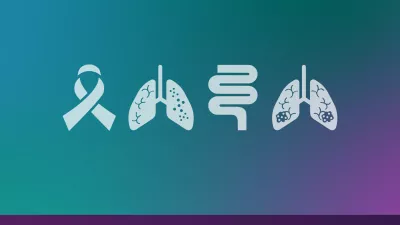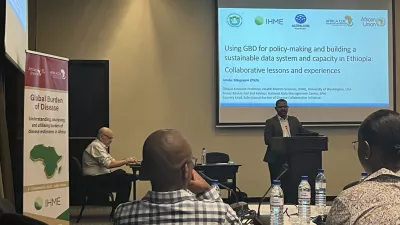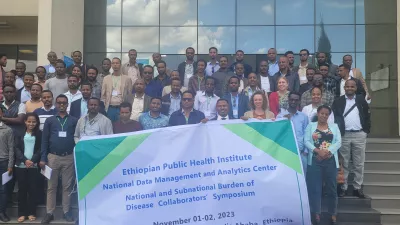Partnership in Ethiopia
The Ethiopian Public Health Institute (EPHI) and IHME have been partnering since 2018 to strengthen understanding of health trends and support policy changes in Ethiopia.
Photo by Daggy J Ali, Unsplash.
About the partnership
The Ethiopian Public Health Institute (EPHI) and IHME partner to facilitate the collection, exchange, and analysis of data, conduct burden of disease analysis, strengthen health metrics capacity, and translate evidence to decision-makers for policy action.
Established in 2018, this collaboration produced the first-ever subnational burden of disease estimates for Ethiopia, established a national data repository system at EPHI’s National Data Management and Analytics Center for Health (NDMC), initiated data science and health metrics training initiatives, and developed actionable evidence briefs and policy documents for the Ministry of Health.
Looking ahead, EPHI and IHME will advance local capacity to produce high-quality analytic products that meet local and national evidence demands and contribute to informed decision-making and policy setting at the national, regional, and district levels.
Spotlight on: Ethiopian Public Health Institute (EPHI)
Get an inside look at the partnership between IHME and EPHI's National Data Management and Analytics Center for Health, working together to advance public health in Ethiopia and beyond through data.

What are the major findings?
Over the last three decades, Ethiopia has made substantial improvements in health. Average life expectancy has increased by 22 years, thanks to reductions in deaths due to:
- HIV/AIDS
- tuberculosis
- diarrheal diseases
- lower respiratory infections
- war and conflict
However, progress was not uniform across Ethiopia’s highly diverse, multi-ethnic, and predominantly rural population.
While Socio-demographic Index (SDI) rose in Ethiopia overall from 0.13 to 0.34, there was a much more noticeable increase in the highest-SDI region of Addis Ababa compared to the lowest-SDI regions of Somali and Afar.
Featured projects
GBD Compare in Amharic
We collaborated with the Ethiopian Public Health Institute to translate our most popular data visualization, which compares health trends across over 200 countries and subnational locations.

Reports and scientific articles
The Ethiopian Public Health Institute and IHME have collaborated on numerous scientific publications in peer-reviewed journals, policy reports, and blog posts.

Ethiopia country profile
Country profiles provide an overview of findings from the Global Burden of Disease (GBD), including forecasts for population size, life expectancy, causes of death, and more. They are generated using over 80,000 data sources to produce the most scientifically rigorous estimates possible.





